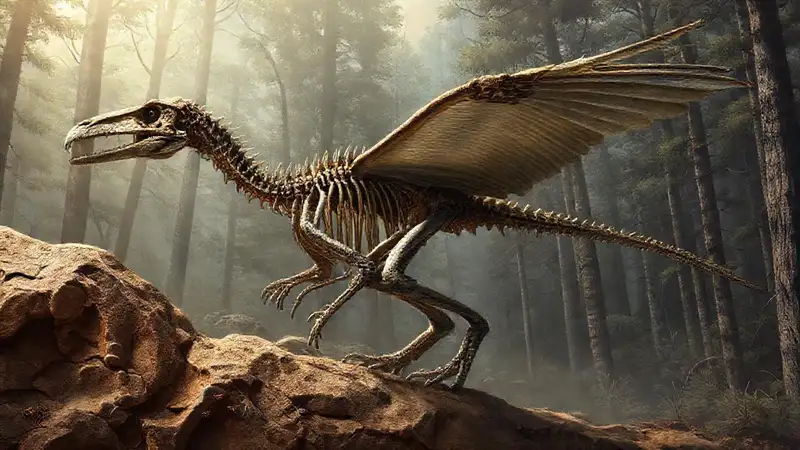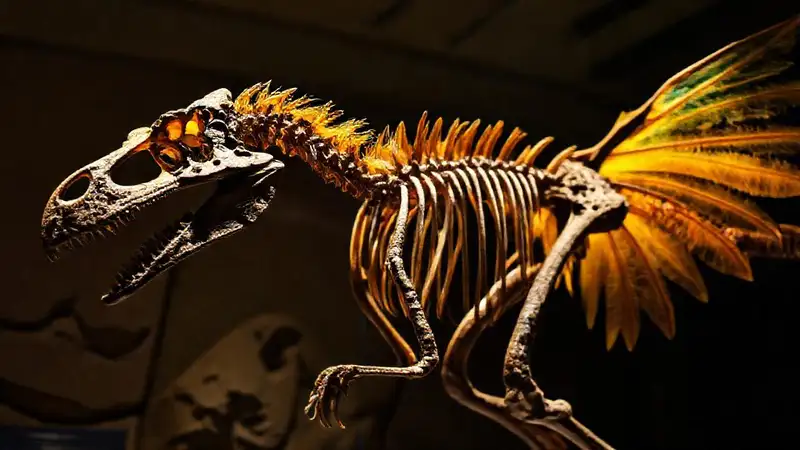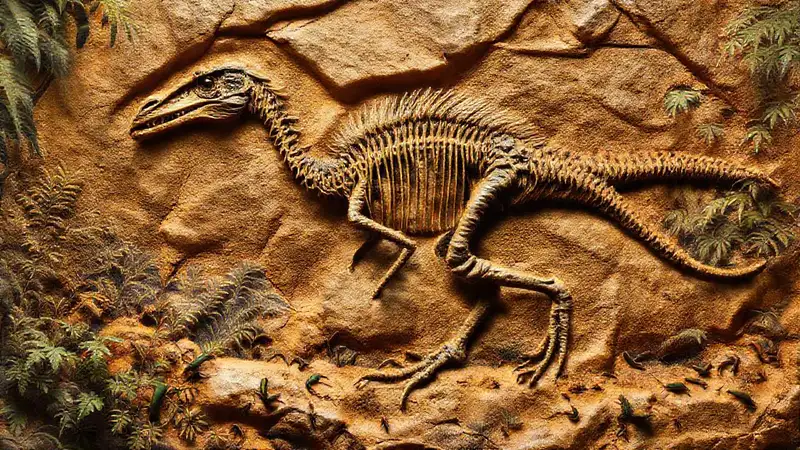The fossil of Archaeopteryx lithographica, discovered in Bavaria, Germany, in the late 19th century, holds a uniquely significant position in the history of evolutionary studies. It represents one of the earliest known transitional fossils, providing crucial evidence for the evolutionary link between reptiles and birds. For decades, paleontologists debated its precise place in the lineage, but advances in fossil preparation and analysis have solidified its role as a key example of the dinosaur-bird connection. Archaeopteryx is a remarkably well-preserved specimen, offering unparalleled insights into the early stages of avian development.
The fossil's significance lies not just in its age (approximately 150 million years old), but also in its surprisingly mosaic of reptilian and avian characteristics. It possesses features reminiscent of both dinosaurs and birds, making it a vital bridge in our understanding of how birds evolved from their ancient reptile ancestors. Studying Archaeopteryx allows scientists to trace the gradual development of bird-like features, such as wings and feathers, during the Mesozoic era.
Skeletal Features: The Reptilian Backbone
One of the most striking aspects of Archaeopteryx is its skeletal structure. Its vertebral column clearly exhibits reptilian characteristics, featuring numerous fused vertebrae, a feature common in many dinosaurs. This strong, inflexible backbone, combined with a large, robust pelvis, points to a ground-dwelling lifestyle, consistent with earlier theropod dinosaurs. However, Archaeopteryx also possessed a furcula, or wishbone, a feature exclusively found in birds, indicating an adaptation for efficient flight.
Furthermore, the skull of Archaeopteryx presents a fascinating blend of reptilian and avian elements. It retains several features typical of reptiles, including teeth and a long, bony tail, functions essential for feeding and balance in earlier dinosaurs. The presence of the hollow, pneumatic bones, especially in the hand and forearm, is another distinctive avian characteristic which is present in Archaeopteryx, showcasing an early step toward lightening the body for flight. The overall skeletal arrangement, therefore, reveals a creature that wasn’t entirely avian, but undeniably closer to the dinosaur lineage than any other known fossil.
Feathers: A Key Transition
The discovery of feathers on Archaeopteryx was revolutionary. Initially, it was debated whether these structures were actually flight feathers or were simply primitive filaments. Modern research, using advanced imaging techniques, has unequivocally demonstrated that Archaeopteryx possessed pycnofibers – simple, asymmetric feathers that are believed to have served a different purpose than the asymmetrical flight feathers of modern birds. These feathers likely played a role in display, thermoregulation, or even gliding.
The presence of feathers in Archaeopteryx strongly suggests that feathers evolved long before they were used for powered flight. It's widely accepted now that feathers initially emerged in dinosaurs as insulation or for visual signaling, and that flight eventually developed from these simpler structures. The fact that Archaeopteryx possessed both simple and more complex feather types demonstrates a crucial evolutionary transition in feather development.
Wing Structure and Forelimbs

The forelimbs of Archaeopteryx are perhaps its most iconic feature, showcasing a unique combination of reptilian and avian adaptations. The hand structure is distinctly reptilian, with three long, slender digits – the second, third, and fourth – similar to those seen in many theropod dinosaurs. However, these digits were covered in feathers, forming a membrane – known as a patagium – that stretched between the fingers and the body, functioning as a rudimentary wing.
The placement and structure of the carpal bones (wrist bones) are also noteworthy. They are more flexible than those found in most reptiles, allowing for a greater range of motion in the wrist and contributing to the ability to spread and control the wing membrane. The subtle modifications to the ulna and radius provide structural support and contribute to the overall aerodynamic potential of the wing, signifying an adaptation towards a more aerial lifestyle.
Teeth and Digestive System
Despite its bird-like features, Archaeopteryx retained several reptilian characteristics, most notably its teeth. The fossil exhibits a full set of sharp, conical teeth, consistent with the dentition of carnivorous theropod dinosaurs. Its digestive system, as inferred from fossil evidence and comparisons with modern birds, was likely adapted for a carnivorous diet, processing meat and bone.
Furthermore, Archaeopteryx possessed a relatively large gizzard – a muscular pouch in the digestive tract – suggesting it swallowed stones to aid in the breakdown of bones. This adaptation is also found in many modern birds of prey, further reinforcing the link between Archaeopteryx and the dinosaur lineage. The presence of these reptilian features demonstrates that Archaeopteryx was not a fully formed bird, but a transitional form with a diverse range of ancestral traits.
Conclusion
Archaeopteryx remains an incredibly valuable specimen for paleontologists and evolutionary biologists, serving as a cornerstone in our understanding of the origin of birds. Its unique combination of reptilian and avian traits dramatically clarifies the steps involved in this remarkable evolutionary transition. By carefully examining its anatomy, scientists continue to refine our knowledge of how dinosaurs gradually transformed into the feathered, flying creatures we know today.
The ongoing research and technological advancements continue to unveil further details about Archaeopteryx, solidifying its position as one of the most important fossil discoveries of all time. Ultimately, Archaeopteryx serves as a powerful reminder of the dynamic and ongoing nature of evolution, and the interconnectedness of life on Earth.





Deja una respuesta